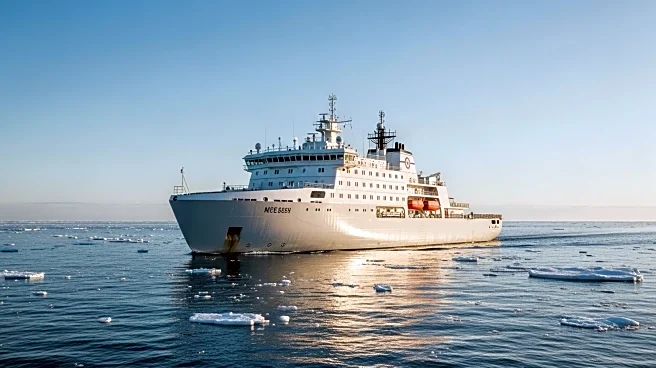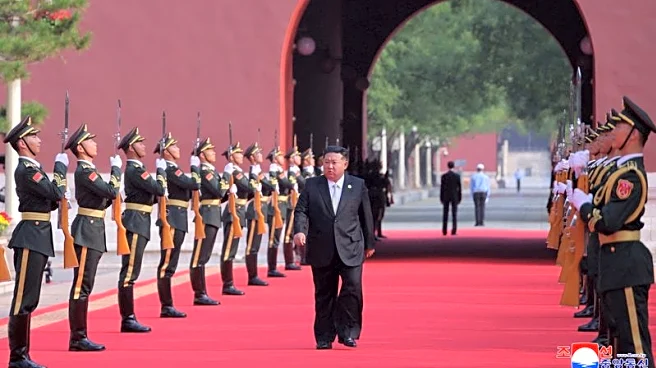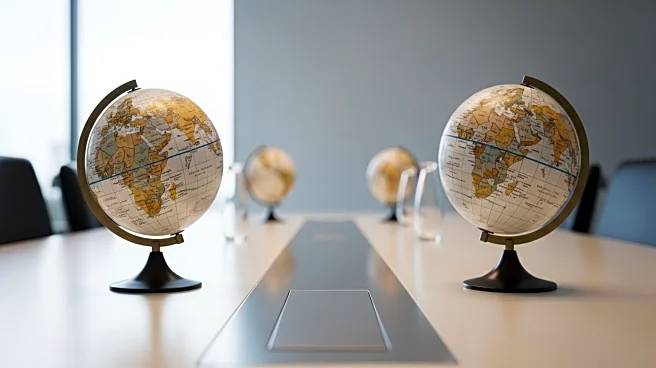What's Happening?
South Korea is intensifying its efforts to become a key player in Arctic shipping by allocating $5.2 billion for the 2026 financial year to support the expansion of Arctic shipping routes and the construction of ice-class vessels. The Ministry of Oceans and Fisheries (MOF) is spearheading this initiative, which includes a significant increase from the current budget. The government plans to invest $8 million per icebreaking vessel, with operations expected to commence in the Arctic by 2030. South Korean shipbuilders, such as Hanwha Ocean and Samsung Heavy Industries, are shifting focus to build these vessels for domestic clients. Additionally, $1.1 billion is earmarked for upgrading southern ports like Busan, Yeosu, and Gwangyang to handle Arctic shipping, aiming to establish the region as a global maritime hub.
Why It's Important?
This strategic investment by South Korea underscores the growing importance of Arctic shipping routes as global warming makes them more accessible. By enhancing its capabilities in this area, South Korea aims to strengthen its position in the global maritime industry and capitalize on the increasing shipping traffic along the Northern Sea Route. This move could have significant economic implications, potentially boosting South Korea's shipbuilding industry and enhancing its trade routes. The initiative also aligns with President Lee Jae Myung's agenda to revitalize the country's southern ports, which could lead to increased economic activity and job creation in the region.
What's Next?
The South Korean government is expected to continue its focus on Arctic shipping, with pilot operations set to begin next year. The relocation of the MOF to Busan signifies a commitment to revitalizing the maritime sector in the southern region. As the Arctic shipping routes expand, South Korea may seek further international collaborations to enhance its capabilities and secure its position as a leader in this emerging market.











